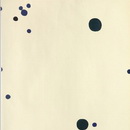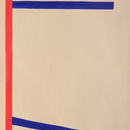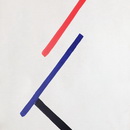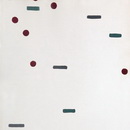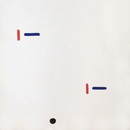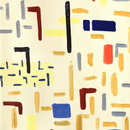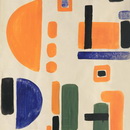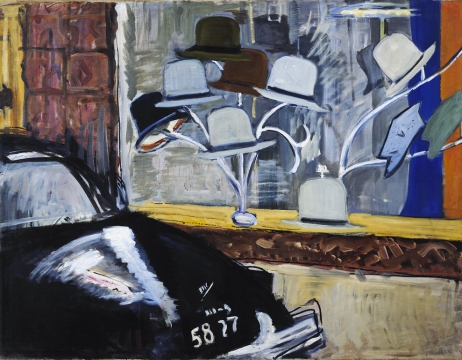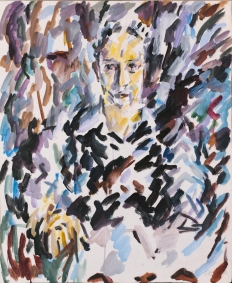Zlotnikov studied at the Moscow Middle Art School for especially gifted children and attended the sculpture studio at the Golubkina Museum. An interest in Fauvism marked the early period of developing a contemporary style. Then Zlotnikov and his school friend, the artist and mathematician Vladimir Slepyan, became admirers and popularizers of the works of Oleg Tselkov. Later, the two became science enthusiasts and sought artistic analogies for the latest scientific discoveries. Slepyan turned to Surrealism, Zlotnikov to expressive abstract work. Influenced by the advances in nuclear physics, Zlotnikov created his first abstract work, “Geiger Counter.” The further development of his own style came in the circle of artists who gathered in Slepyan’s studio (Boris Turetsky, Igor Kukles, and Oleg Prokofiev). In their research and happenings, they elaborated new forms of abstract art as the language of a future scientific and technological civilization and achieved lapidary forms of a purist style. For Zlotnikov the result of their collaboration was the “Signal System,” imbued with his study of Piet Mondrian and Kazimir Malevich. The artist perfected it in several series of drawings in 1957-1962. The foundation of the work on these series is the study of cybernetics, analysis of human psychology, tactile sensations, and the communicative possibilities of abstract art. After Slepyan fled to the West and the circle fell apart, Zlotnikov returned to figurative Cézannist painting in the early 1960s. He painted a series of self-portraits, as well as genre pieces and landscapes. A pendulum swing from abstract work to figurative and back again characterizes his creative path. In the late 1960s, he was back in nonfigurative work, but this time in Abstract Expressionism imbued with the early period of Kandinsky’s work. Zlotnikov’s connection to this tradition is evinced by his persistent attempts to convey musical sounds, as well the echoes of late symbolism, the motifs of mass movement of people, cathedral ceremonies, flights of spirits, all conveyed in an extremely schematic manner. In recent years, he is increasingly interested and impulsive, automatic, and naïve drawing in abstract improvisations. Zlotnikov, the patriarch of nonconformist art, is still actively working.
THE TSUKANOV ART COLLECTION
 |



 |
Zlotnikov Yuri | |
1930 - 2016 | ||
"Yuri Zlotnikov, a confirmed positivist and rationalist, firmly believed that the new language in art had to be supported by precise scientific research. “Signals,” burnished to crystal clarity, had to be perceived not as “just” paintings, but should “reveal the laws of psychophysiological motor behavior and the nature of reactions to color and form.” Bear in mind that most Soviet nonconformist artists of the period who chose abstraction as a style were under the direct influence of the works of Mark Rothko and Jackson Pollock, which were shown to the Soviet public at the American National Exhibition in Moscow in 1959. Zlotnikov went in the opposite direction and insisted that it was important “not to give in to the chaos of emotional self-expression but to analyze.” Most interestingly, his studies found the greatest support not among artists but among mathematicians, philosophers, and cyberneticists." Andrei Kovalev
The artist's work can be found in the following museums and collections:
| Vitrina The State Tretyakov Gallery | Compozition ¹ 93 Contemporary Art Museum |

